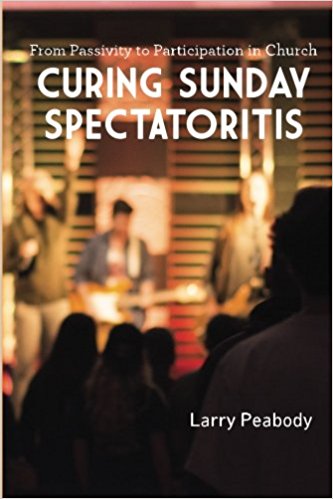Body Parts Participate
The movie, Toy Story, takes us on an imaginative journey into “the secret life of toys,” in which Andy’s playthings huddle while he is out of the room. Imagine, for a moment, a meeting that includes the members and systems of our bodies . . . .
The head had made it clear: the various parts of the body should meet—often. They had begun doing so eagerly.
Each part came to the gatherings with something to benefit all the others. Muscles supplied arms and legs with the power to move and lift. The seemingly weak skin could not do that, but it did stand guard against deadly germ invaders. All kinds of signals—pleasure, pain, tactile perception, timing, and so on—pulsed to and from the body’s various parts through the network of nerves. Lymph nodes, working quietly in the background, defended the whole body against infections. Each of the body’s many other parts—from tongue to toe, from head to heel—did its bit to make sure the whole organism could work well, stay healthy, and remain strong.
Taking part in those meetings was like playing in a symphony—each instrument contributing to the whole at just the right moment.
Then Something Changed
Over time, the music shifted. None of the parts recalls exactly how or why it happened. Did fatigue overtake some of them, making it easier just to receive than to give? Or was it because certain ones wanted to play larger and larger roles in the meetings? Maybe it was both. In any case, the result was the same. Most parts gave up their roles as contributors and became consumers. A very few active parts ended up serving a great many passive ones. The symphony-like meetings had turned into soloist performances.
Originally, the body carried out the head’s work-assignments with real power. Vitality flowed into and out from every specially endowed part. But with the change, the passive body became weak and far less able. The few working parts tended to burn out. The others, lacking regular exercise, became flabby or stiff.
A couple of centuries ago, Paul saw clearly what this body needed to recover: “. . . speaking the truth in love, we will in all things grow up into him who is the Head, that is, Christ. From him the whole body, joined and held together by every supporting ligament, grows and builds itself up in love, as each part does its work” (Eph. 4:15-16).
Full-Voiced Grace
“As each part does its work.“ Paul, of course, was speaking of the Body of Christ, the ekklesia, in the first century. And despite that Body’s shortfalls, its usual meeting format allowed each part to do the work it was cut out to do. Through its Spirit-given gift(s), any part was free to contribute its unique form of God’s grace to the rest of the Body (I Pet. 4:10). So the whole Body benefited from the rich supply of grace flowing through many—not just one or two—conduits. Built up and strengthened in that way, the church in those days stood its ground against opposition and made the world take notice.
Second-century Christian scholar Tertullian reported what those in the Roman Empire said about these early Christians: “See how they love one another.” Which only confirmed what Jesus had said in his New Command—that the world would know his followers by their love for one another.
Full-Bodied Action
Emerging from that kind of one-anothering, the love erupted into blessing for the surrounding pagan culture. Rodney Start, in The Rise of Christianity, writes: “To cities filled with the homeless and impoverished, Christianity offered charity as well as hope. To cities filled with newcomers and strangers, Christianity offered an immediate basis for attachment. To cities filled with orphans and widows, Christianity provided a new and expanded sense of family. To cities torn by violent ethnic strife, Christianity offered a new basis for social solidarity. And to cities faced with epidemics, fire, and earthquakes, Christianity offered effective nursing services. . . . For what they brought was not simply an urban movement, but a new culture capable of making life in Greco-Roman cities more tolerable" (p. 161).
What Those Early Christians Lacked
Christ-followers multiplied at an astonishing rate throughout that ancient world. Yet those Christians had no missionary societies. No Bible colleges or seminaries. No denominations. No email, cell phones, or Internet. No megachurches or expensive buildings. No salaried staffs. Today, we have all those and more. But we have trouble even hanging onto our own young people once they leave home and church.
What did those early Christians have that we need to reclaim? They counted on the Holy Spirit dispensing God’s many-sided grace through members of Christ’s Body in participatory assemblies. We have forgotten how to gather in ways that permit Christians to exercise their grace-gifts in our week-in-week-out church meetings. We have traded one-anothering for operating in audience mode. It’s not only that we are not expected to share from our gifts in the congregation—we are expected not to do so. As a result, the overflowing, empowering river of God’s grace is reduced to a trickle. Platform-driven performances largely limit us to what comes through the gifts of those with microphones up on the stage
Living this far from the first century, what can we do? In The Message, Eugene Peterson, who lived into the twenty-first century, paraphrases I Cor. 14:26-33 this way:
“So here's what I want you to do. When you gather for worship, each one of you be prepared with something that will be useful for all: Sing a hymn, teach a lesson, tell a story, lead a prayer, provide an insight. If prayers are offered in tongues, two or three's the limit, and then only if someone is present who can interpret what you're saying. Otherwise, keep it between God and yourself. And no more than two or three speakers at a meeting, with the rest of you listening and taking it to heart. Take your turn, no one person taking over. Then each speaker gets a chance to say something special from God, and you all learn from each other. If you choose to speak, you're also responsible for how and when you speak. When we worship the right way, God doesn't stir us up into confusion; he brings us into harmony. This goes for all the churches . . . .”















